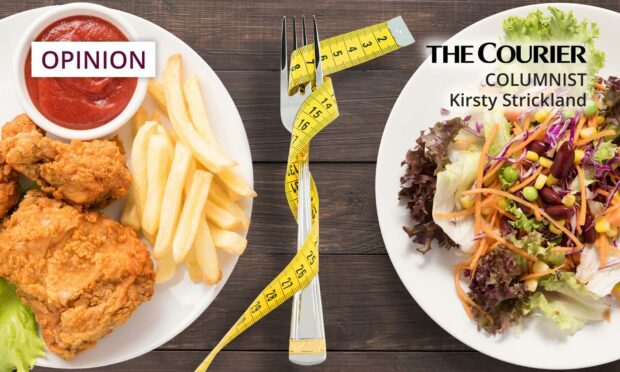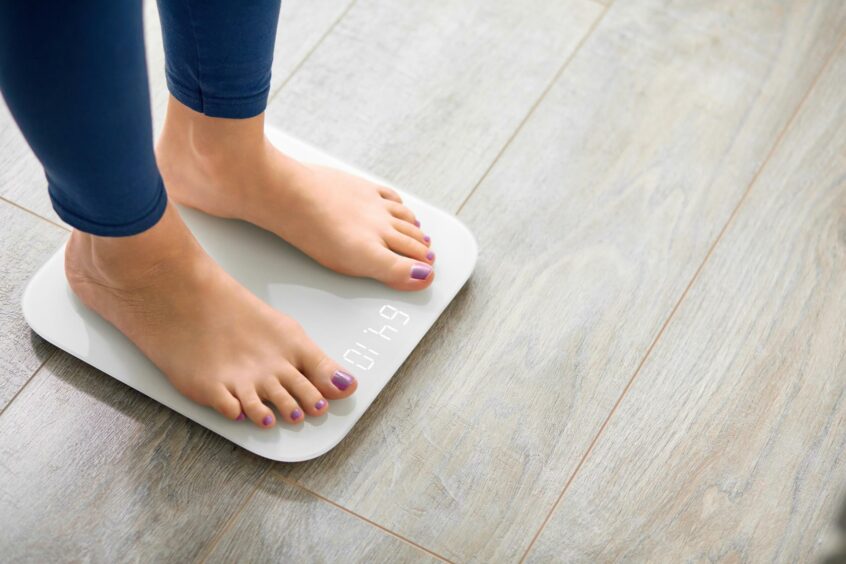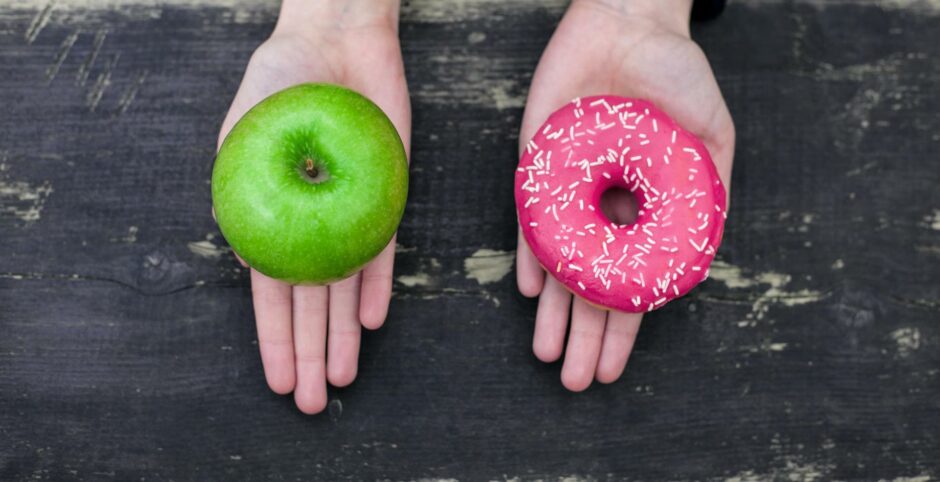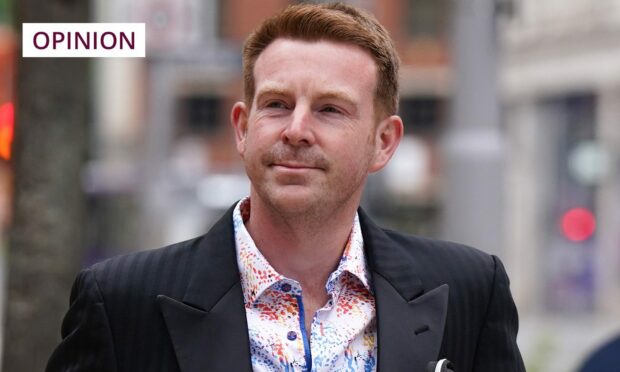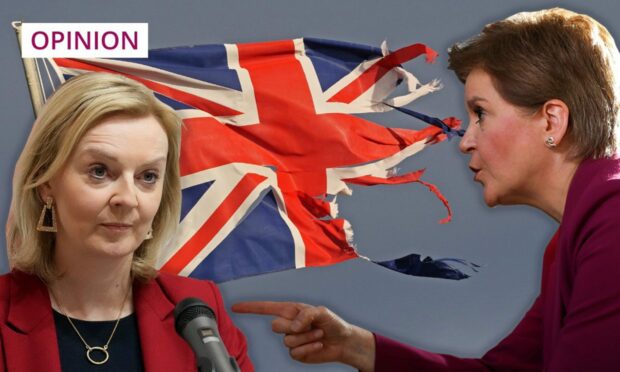I joined my first diet club shortly after I left school.
It was held in a dusty community centre and promised an easy way to lose weight without feeling hungry or deprived.
Sitting among women aged from 18 to 80, I was given a welcome pack with a wee book that the coach would use to record my weight loss in each week.
There was also a hefty booklet that listed the calorie content of different foods.
Flicking through it, I was horrified to discover that a banana – a fruit, for goodness sake, these things are supposed to be GOOD for you – could contain up to 150 calories.
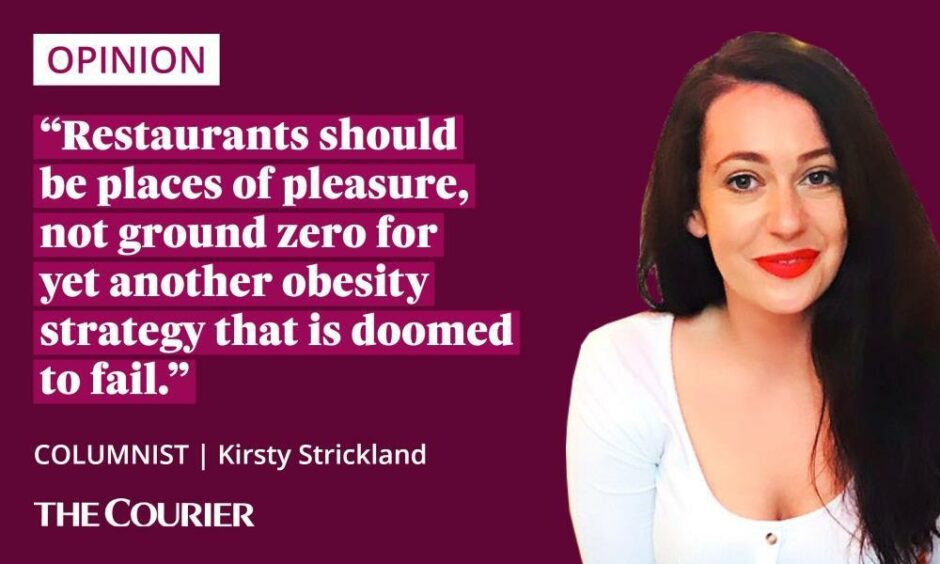
I already knew a bag of Wotsits was around 90 calories. So in that first week of my new diet, I switched out ‘bad’ high-calorie items, like meat, bananas and butter, for what I was sure must be much healthier options: low calorie crisps, cup-a-soups and low-fat spread.
At the next meeting I discovered that despite enduring a week-long rumbling stomach, my weight had stayed exactly the same.
And that was the end of that.
Is Scotland set for calories on the menu too?
Our understanding of what constitutes healthy eating has moved on since then.
Even the big beasts of the weight loss world now at least try to promote the benefits of nutritionally-balanced meals, rather than just pushing members towards whatever foods happen to contain the fewest calories.
But now politicians are picking up where the diet industry left off and calories are being monstered once again.
Last week, the UK Government introduced new rules which will mean restaurants in England which employ more than 250 people will have to display calorie data on their menus.
The Scottish Government is considering whether to implement a similar scheme here.
This is being done as part of a strategy to tackle obesity and to encourage us all to make healthier choices.
I am sceptical, to say the least, that it will achieve that aim.
Calories don’t tell the whole story
The problem with making calories the headline is that you can’t judge what is ‘healthy’ by one numerical value.
Especially one that has been the victim of decades of negative press, as the humble calorie has.
That 150 calorie banana that horrified me when I was young and daft is a fantastic source of energy.
Just met my first pub menu with calories and it’s a disaster. Campaign to reverse this nonsense begins immediately pic.twitter.com/x5q7mbFXrD
— Freddie Sayers (@freddiesayers) April 7, 2022
It is rich in nutrients, including potassium – which most of us don’t get enough of.
It will satisfy your hunger better than a bag of Wotsits could.
Nutritionally, it wipes the floor with its low-calorie snack competitors.
Weight is a crude measurement of a person’s overall health.
It tells us nothing about strength, activity levels or the nutritional balance of our diet.
Or governments could invest in tactics that might actually work
Eating out in a restaurant is a treat for most people.
As the cost of living crisis grows, that will become more true than ever.
Customers feeling guilt-tripped into switching chips for a side salad won’t miraculously translate it into sustainable, long-term, lifestyle changes.
But I suppose it’s much easier for governments to tell restaurants to add calories to their menus than it is to invest in the things that would actually help our nation become healthier.
It’s easier than investment in green spaces and council-run leisure centres.
It’s cheaper than tackling the crippling poverty that we know leads directly to poorer health outcomes.
It takes a lot less time than reimagining our cities so that they work for everyone: turning them into places where it’s just as easy to walk or cycle as it is to drive.
GOV: We need to tackle obesity!
SCIENCE: Well, if you want people to be HEALTHY, it’s actually best to eradicate poverty, since that’s the most unhealthy thing for the mind and body, so you could try raising living standa-
GOV: CALORIES ON MENUS!!!
— Sofie Hagen (@SofieHagen) April 6, 2022
If calorie labelling was the key to good health, we would already have seen some evidence of that by now.
Nearly every item of food in the supermarket has its calorific value shown on the front.
We also have the entire internet, full of every single piece of information we could possibly need, at our fingertips.
Who among us doesn’t know that there are more calories in a cheeseburger and chips than a piece of steamed fish and kale?
More to the point: who is ordering steamed fish in a restaurant?
Restaurants should be places of pleasure, not ground zero for yet another obesity strategy that is doomed to fail.
Calories on the menu are too big a risk
It’s not that unusual to see politicians implement a new policy because they want to be seen to be doing something, rather than because they think it will actually make a difference.
That’s fine if it doesn’t bring about unwanted consequences.
Andrew Radford, chief executive of eating disorder charity Beat, said of the proposals:
“Requiring calorie counts on menus risks causing great distress for people suffering from or vulnerable to eating disorders, since evidence shows that calorie labelling exacerbates eating disorders of all kinds.’’
This announcement is a slap in the face to the millions of people who are affected by eating disorders, myself included.
I would urge for there to be an option of a separate menu without calories, so one can enjoy a meal without triggering disordered thoughts. https://t.co/SUYf2ykAew
— Ellie Roy MSYP (@ellie_msyp) April 6, 2022
For most people, seeing calories on menus will be a minor irritation.
Some might change their order, others might choose what they wanted anyway but find they enjoy it less.
Eventually, our eyes will probably glaze over and we’ll stop noticing the calorie data when we go out to eat.
But for those with eating disorders, this move could have a profoundly negative impact on their health and wellbeing.
There is possibility that this new scheme could do more harm than good.
And that doesn’t seem to me to be a risk worth taking.
